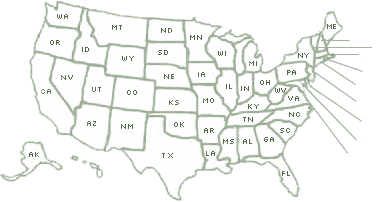
There are obvious benefits to lightening your trekking load. A lighter pack means you’re more comfortable while on the move. It also means you’re saving energy.
Using up less energy means you’ll be able to cover more ground, see more sights, and travel more challenging terrain, all without getting tired out as easily. Even better, it means you’re putting less strain on your legs, which reduces the risk of injury.
Luckily, there are plenty of ways you can lighten the load without having to sacrifice on the essentials. We throw in some of our favorite hacks, along with some trusted age-old advice.
When you reach camp at the end of the day feeling less tired than usual, you’ll thank yourself for packing a lighter load.
- Weigh Your Pack

The easiest way to identify items you can replace with lighter alternatives, or ditch altogether, is to get your pack together and weigh it.
Get your scales out and weigh everything from your tent to your sleeping bag and the backpack itself. Write down the weight of each item in pounds and ounces; we’re looking for accurate weights here, so don’t just look up what your gear manufacturers have to say.
For three season backpacking, you can shoot for a target base weight of 25 pounds. If you want to become an ultralight packer and carry 10 pounds or less, then you’re going to have to put in a bit more time and commitment.
Weighing your pack will help you to determine how many changes you will need to make. Upgrading your gear will not only lead to weight savings, but you’ll also find that most of the newer stuff simply works better, making it well worth the investment.
We should point out here that there’s no clear-cut answer to how much your pack should weigh. In the end, it will depend on a variety of things, including the type of conditions you expect to encounter. Never put yourself at risk by getting rid of essentials and make sure you prepare yourself for emergency situations such as difficult weather conditions or injuries.
- Focus on the Big Three

Once you’ve weighed your pack, you’ll likely notice that your bulkiest items are the big three. We’re talking shelter, pack, and sleeping bag. You should concentrate on reducing these three key areas if you want to see a noticeable difference. Aim to reduce their combined weight to under 9 pounds.
Sleep system
Sleeping bags and pads are a great place to start. Not only can you find ones which are lighter, but you can also get ones which compress smaller, so it takes up less space in your pack.
You’ll have to pay a hefty price tag if you want a bag which is both lightweight and can keep you warm, but it can be worth it if you’re planning lots of trips. Lightweight hikers seem to like quilt bags, so you may want to consider these as an option.
Shelter
Depending on your preferences and destination, you may be opting for a tent, tarp, or bivy. There are several lightweight tents out there, but you don’t want to disregard tarps and bivys either.
Tarps facilitate ventilation and give you a better connection to your natural surroundings. If you’re worried about bugs, then mosquito netting offers a simple, lightweight solution.
Of course, tarps take a while to get used to and are not suitable for all conditions, so take it on a case by case basis.
Pack
You may want to leave this item to last when you have a better idea of the weight bearing capacity you need, as well as volume requirements.
If you have managed to reduce these substantially, then you will likely be able to find a pack that eliminates unnecessary bulky frames and thick fabrics meant for heavier loads. These changes can lighten gear by as much as 7 pounds.
Lighter gear tends to be more expensive, which makes sense since they’re made out of stronger, lighter materials. If you’re serious about trekking, however, then you will see it’s worth the investment in the long run.
You don’t have to upgrade all at once; replace one piece of gear at a time to spread out the cost.
- Only Keep What You Need

For those less experienced, it’s very easy to pack too much. Ditch the non-essentials and only pack what you actually need. You should take into account where you’ll be heading off to, what kind of weather conditions to expect, and how long you’ll be away. These things will give you a better idea of what you need for this individual trip.
You need different gear for cold and wet weather, compared to warm, dry conditions, so pack accordingly. While it may be tempting to take certain luxuries with you, try not to go overboard. If you can, look for lighter alternatives, but keep entertainment and unnecessary comfort items to a minimum.
- Use Simple Hacks

Lightening your trekking load can be expensive, so if you can’t afford to splash out on costly new gear, you may want to try some of these inexpensive hacks favored by experienced trekkers.
Share the load: Not alone on your trip? Then take advantage of this fact and consolidate your resources. You’ll find plenty of items you can share, such as shelter and cooking equipment. Try to distribute the weight evenly amongst your group so you can all share the benefits.
Dry out your gear: All that moisture adds unnecessary weight to your pack. Before you pack your stuff away, be sure to dry it out by laying them out in a sunny spot. If you need to get going, just hang them off the pack to dry on the go.
Leave the stove: Save some pounds by dropping the stove and fuel and going for non-cook meal plans. You don’t have the sacrifice on taste or nutrition, just be sure to plan your meals accordingly.
Trim the extra weight: If you’re serious about lightening your pack, then trimming is for you. Get rid of any unnecessary weight caused by useless pockets or zippers and brand name tags. You can even cut part of the handle off from your toothbrush or utensils if you fancy going the extra mile, or opt for smaller travel sizes.
 Your Privacy Choices
Your Privacy Choices


 The
The